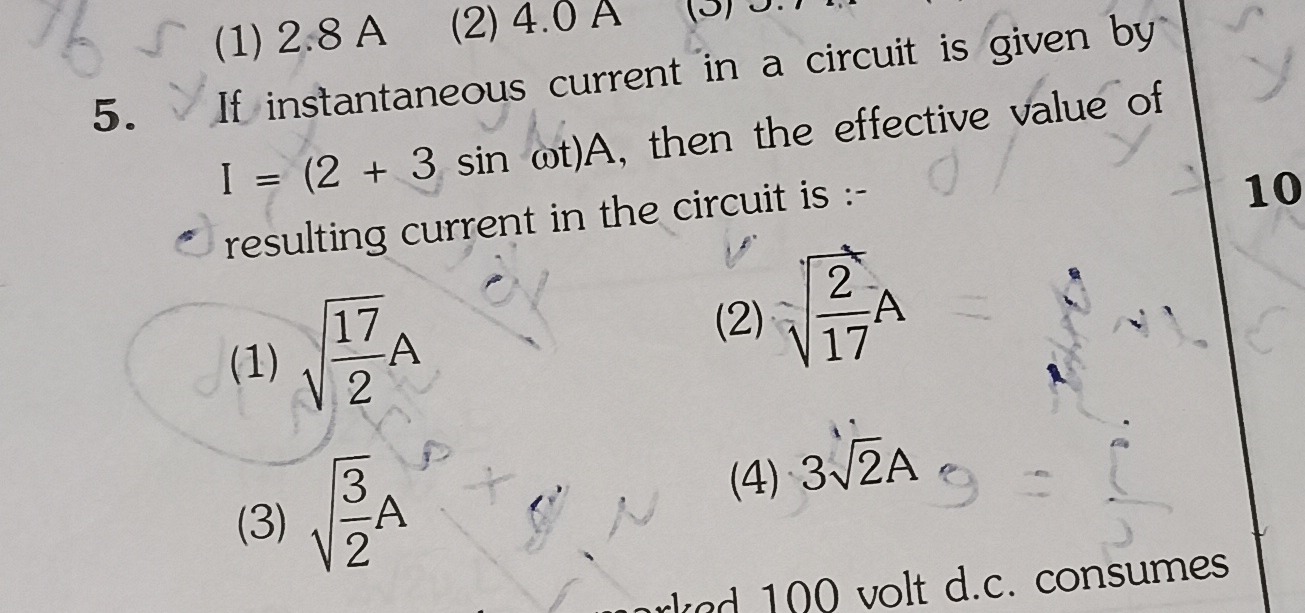Question
Question: If instantaneous current in a circuit is given by $I = (2 + 3 \sin \omega t)A$, then the effective v...
If instantaneous current in a circuit is given by I=(2+3sinωt)A, then the effective value of resulting current in the circuit is :-

A
217A
B
172A
C
23A
D
32A
Answer
The effective value of the resulting current in the circuit is 217A.
Explanation
Solution
The instantaneous current is given by I=(2+3sinωt)A. This current can be decomposed into a DC component and an AC component. The DC component is IDC=2 A. The AC component is IAC=3sinωt. The amplitude of this AC component is Im=3 A. The RMS value of the AC component is Irms(AC)=2Im=23 A. The effective value (RMS value) of a current that has both DC and AC components is given by the formula: Ieff=IDC2+Irms(AC)2. Substituting the values: Ieff=(2)2+(23)2=4+29=28+29=217 A.
